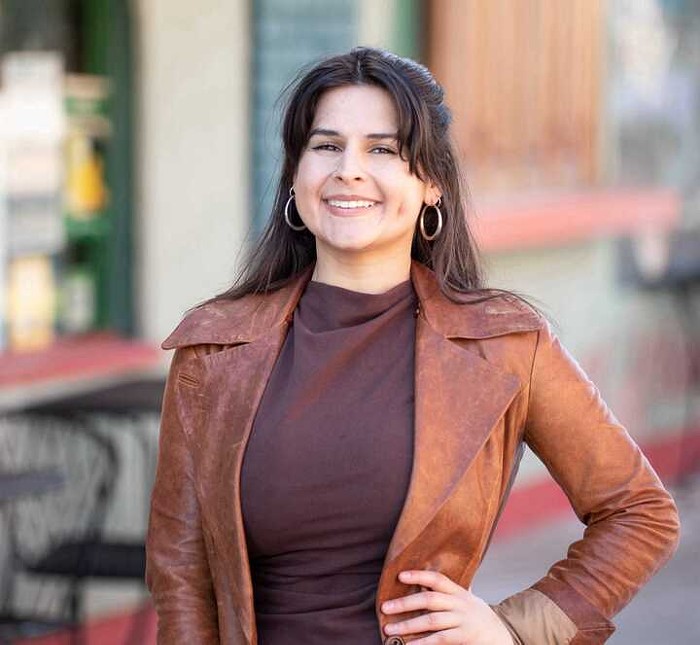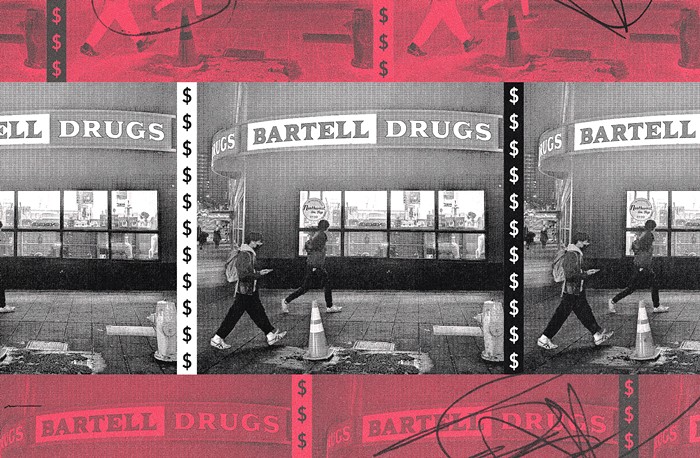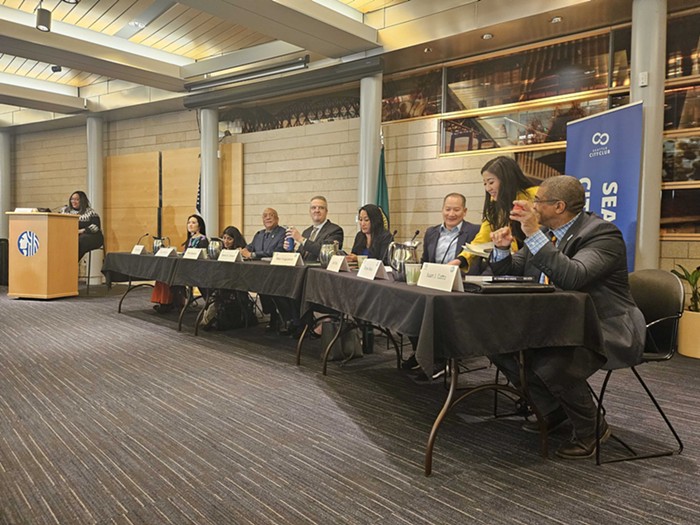On October 1, two days after Lyft announced that it would be opening a satellite office in Seattle, the San Francisco–based company hosted a Thursday night schmooze involving journalists, drivers, and riders at the Starbucks Reserve Roastery & Tasting Room on Capitol Hill.
It was interesting timing for a party. A month earlier, Seattle City Council member Mike O'Brien had introduced a union-backed bill that would allow Lyft, Uber, Sidecar, and other transportation network company drivers to collectively bargain with the companies running their apps. No city had tried anything like that before. Local debuts of unregulated, on-demand apps usually provoke some kind of reaction from flustered city governments, but until O'Brien's proposed regulation, no municipalities had attempted to legislate—or even define—the organizing rights of on-demand workers.
The Lyft party, which took place in a cavernous meeting space among the roasting machine's metal tubes and whirring parts, seemed designed to imply that this kind of regulatory effort wouldn't be necessary. When I sat down near a pile of beans with Lyft Seattle general manager Todd Kelsay (formerly of Sun Microsystems and Microsoft), he characterized Lyft as a "people-powered" company with a community mission. Kelsay spoke in warm, down-to-earth terms, the way Bob Saget might explain something on Full House. "To us, the driver is not just a piece of machinery, and the passenger is not just a fare," he said. "We do have a mission, and everyone in the company believes that, and it does involve community and environment. It involves doing something impactful in the community that we love."
Lyft communications manager Paige Thelen sat next to me to monitor the interview. O'Brien's proposed legislation was concerning, she added, because it could limit drivers' flexibility, infringe on their privacy, or potentially violate federal labor law. When I later asked the company directly whether it supported its drivers unionizing, Lyft spokesperson Chelsea Wilson skirted an answer, but wrote in an e-mail that "the proposed ordinance threatens the privacy of drivers, imposes substantial costs on passengers and the City, and conflicts with longstanding federal law." Lyft had "urged the full Council and the Mayor to reject the bill," she added.
Uber also would not comment on whether the company supports its drivers unionizing, but a spokesperson provided the following statement: "Uber is an important contributor to the local economy in Seattle—helping to create new opportunities for many people to earn a better living."
Not long after I finished speaking to Kelsay at the Starbucks Roastery, I was offered the opportunity to interview a part-time Lyft driver and full-time broadband technician named Michael Stephens. I thought I'd be able to chat with Stephens alone, but a minder hovered nearby while I asked Stephens how he felt about O'Brien's bill.
Stephens told me that he saw no point in a ride-hailing company union, seeing as union dues would cut into his bottom line and he was comfortable bargaining on his own. Stephens said he was making upwards of $25 an hour, and he felt that O'Brien's bill was just a way for unions to try to expand their membership. "With how it is right now, I'm doing just fine," he said. "I'm happy with how it is. I don't think we need more regulation."
We then started talking about Seattle's new $15 minimum wage law. Stephens told me, "I don't think we need a $15 an hour minimum wage." When I asked why, our minder intervened.
"He can speak for himself," I said.
"It's just not on the subject," the minder told me.
In fact, wages and working conditions are very much on-subject for local ride-hailing drivers and policymakers who—concerned about high-handed management, unfair compensation, and a deluge of venture capital cash in the Seattle ride-hailing industry—have been slowly laying the groundwork for this city to become the first in the nation to experiment with something that has little precedent: a unionized on-demand economy workforce.
Why here? In the long view, it actually makes a lot of sense that the first and boldest push for on-demand worker unionization would be happening in Seattle—and that ride-hailing app companies would see the city as a place where they need to make a stand. A century before Lyft arrived in Seattle, pretty much the entire city went on strike. The history-making action started with local metal workers demanding a post–World War I raise, but it soon drummed up the support of more than 100 other local unions representing more than 60,000 workers who struck in solidarity with the metal workers. Japanese American unions, though excluded from votes on the general strike committee, went on strike, too. Despite fears that the strike would shut down the city's life-support systems and devolve into chaos, it didn't, and the protest petered out within a week. But Seattle had facilitated the first general strike in US history, and thus solidified the city's reputation as a home to radical solidarity—or, in then-mayor Ole Hanson's words, an anti-American conspiracy to establish "bolshevism, pure and undefiled, with its consequent red terror and tyranny."
Unions in today's Seattle don't enjoy the same kind of clout and widespread solidarity shown in the general strike of 1919. Perhaps because of that decreased influence, they're rarely tagged by opponents as being the red revolutionary menace that Mayor Hanson saw in the early part of the last century. All of which makes it easy for Seattleites—especially those new Seattleites flocking here for all the nonunionized white-collar jobs being created by the local tech-industry boom—to forget that unions, in Seattle and around the country, were once the vehicles for serious social change. If anything, unions carry a reputation these days for being old, creaky, and corrupt. Membership is on the decline: The unionized portion of Washington State's workforce has decreased from 23.8 percent in 1993 to 16.8 percent in 2014, mirroring a national decline from 15.1 percent in 1993 to an even more paltry 11.1 percent in 2014. At the peak of nationwide union membership in 1954, union members made up more than a third of the country's workforce.
At the same time, the state's largely nonunionized technology industries are growing. The Washington Technology Industry Association now estimates that 238,900 people are employed by the information and communication technology sectors, and their median wage ranges from $110,000 to $140,000. Those same highly paid tech hires, in the role of hurried consumers with plenty of disposable income, have been a big part of ushering in the local on-demand economy.
Years ago, people called it the "sharing economy" or "peer-to-peer" networks. But "sharing" and "peer-to-peer" don't capture the lopsided nature of the business. In 2015, services like Postmates, TaskRabbit, Uber, Lyft, Sidecar, Amazon's Prime Now, and Airbnb function to dramatically maximize convenience at one end of an app. For a person in the right income bracket, this means that you no longer have to rely on the city's laggard transit system to get around without a car of your own, nor do you ever have to leave your desk to get a hot meal. (Ride-sharing apps have also had disruptive effects far beyond simple convenience. For example, as New York Times technology reporter Jenna Wortham chronicled in a Medium piece called "Ubering While Black," the invention of Uber's on-demand platform meant that people of color could more easily find rides through apps instead of being subjected to taxi drivers' curbside discrimination. Wortham said she found this new reliance on Uber "troubling," given some of the company's practices, but that it also greatly increased her quality of life.)
But the significant benefits to the consumer on the receiving end of an app don't guarantee fairness on the production side. And given the speed at which on-demand rides have spread, local governments have struggled to assess the burgeoning industry's impacts and regulate accordingly. In Maryland, Montgomery County approved a 25 cents surcharge on ride-hailing trips that will fund taxicab services for seniors, the disabled, and low-income county citizens; in Massachusetts, state legislators interested in helping local consumers have proposed an Uber regulation bill that would force the company to disclose the algorithms that determine its surge pricing model ("surge pricing" is Uber's controversial practice of charging higher fares during periods of high demand). After considering a cap on the number of Uber vehicles on New York City streets because of concerns about increased congestion, Mayor Bill de Blasio dropped the plan this summer and agreed to a four-month traffic study instead.
In Seattle, after a cab-driver-cheered attempt at capping the number of app-based drivers on the road last year, Mayor Ed Murray eventually agreed to legalize Uber, Lyft, and Sidecar without driver caps. But the Seattle City Council threw down a gauntlet this past October when its finance committee unanimously voted to advance O'Brien's Uber driver unionization effort. If the bill passes the full committee, an expensive legal battle is almost certain to ensue, with deep-pocketed ride-hailing app companies arguing that the ordinance preempts federal labor law by treating independent contractors like employees, and the city arguing that it has the right to regulate for-hire drivers and taxi services under state and municipal code.
But even bigger questions about unionizing on-demand economy workforces loom. Chief among them: How can weakened unions tackle the technology of the future? And what would an on-demand "union" even look like?
The organizing behind what could become Seattle's first on-demand driver "union" started with two University of Washington political-science students and an Ethiopian restaurant.
Daniel Ajema and Yedidya Seifu, now 34 and 32, had driven cabs to put themselves through school after immigrating to the United States from Ethiopia. But with the advent of Uber, the UW grads soon recognized on-demand ride-hailing as an industry game changer. The taxi establishment's grip on the market was declining, and Uber's offer to prospective drivers "was enticing," as Seifu puts it.
When Uber came to Seattle in 2011, the company had also specifically used the language of "the American dream" to appeal to immigrant drivers. In a blog post published that August, Uber CEO Travis Kalanick claimed that Seattle's Ethiopian American drivers would enjoy "a reliable, steady stream of income" as owners of "a real business."
Seifu and Ajema put $15,000 on a credit card to pay for a used town car they would share as drivers for Uber, and then paid an additional $5,000 for detailing, a business license, registration, and insurance. When they started driving, business wasn't too bad. "But it wasn't as good as they made it sound like," Seifu remembers. "That's when we realized the problem."
As Uber kept advertising, more drivers kept joining the system. Seifu and Ajema said they ended up making far less than the $200 to $300 a day they were told they could earn, and they believe this was because the city's ride supply was increasing drastically. At the same time, Uber could deactivate drivers based on a poor average rating—ratings that those drivers can now only appeal by paying for a $100 in-person training course. (Drivers on online forums have reported that anything below a 4.6 or 4.5 star average—out of five stars—can get them suspended.) And while Uber was taking a 20 percent commission at the time in Seattle (now 25 percent for UberBLACK), it was the drivers who were dealing with passengers pissed off by Uber's surge pricing and passengers too drunk to keep the contents of their stomachs to themselves. Still, drivers had little help from the company in handling the consequences of bad trips that might damage their vehicle or unfairly give them a low rating, and a low ride acceptance rate could also trigger deactivation.
Seifu and Ajema weren't the only ones who went into significant debt to drive for Uber. It soon dawned on them that they had stumbled on a bigger issue: As individual drivers, they had no way to negotiate their working conditions with a set of algorithms.
"We realized we weren't making that much money, and yet they have the ultimate say in our business," Seifu says. "When we joined, they told us we would be partners. But if we are partners, then we automatically assume we have a say as well. And that wasn't the case."
Seifu and Ajema began organizing the old-fashioned way, passing out flyers and chatting with drivers who were waiting for rides. They didn't start out knowing who the other Uber drivers were on the streets, but word-of-mouth in a tight-knit immigrant community helped overcome the divide.
The two friends quickly realized that they had tapped into a real set of grievances that were repeated over and over again. Ajema chalks some of that up to a collision between the immigrant work ethic and the fundamental unfairness of the financial arrangement: While drivers bought the cars, maintained them, and bought insurance—all the while experiencing lower compensation and poorer working conditions than they were expecting—Uber's executives became billionaires. (Or, as Ajema put it: "Someone comes up with this technology; now he sits somewhere and makes money.")
As Seifu and Ajema spoke to more of their colleagues, drivers began meeting at Assimba Ethiopian Cuisine on Cherry Street off Martin Luther King Jr. Way, in a back room of the restaurant that they had rented for $150 per meeting. When the informal group's membership grew and the Teamsters Local 117 got involved with organizing workers, Ajema and Seifu chose a new location. Dozens and dozens of drivers started filling the Aladdin Hookah Lounge near I-5 on Sunday afternoons, talking about shared experiences while soccer games played on the lounge's multiple TV screens.
In a sense, Seifu and Ajema got lucky. Digital workforces often present immediate obstacles to organizing. After all, there's a lot that's different about working for an app than, say, working in a shipyard with on-site managers. For starters, your work environment is simply your personal space. You don't see the other people like you working nearby.
"The platforms in some ways make the workers invisible to each other," Saint Louis University law professor Miriam Cherry told me over the phone.
The isolation makes it difficult to reach out to other workers, said Cherry, who specializes in the legal interface between technology and labor. And ride-hailing app companies don't give out information to drivers about their coworkers. Very little is known about general driver demographics, because ride-hailing app companies keep that information private.
O'Brien's bill, backed by Teamsters Local 117 and Working Washington, attempts to address that problem by linking for-hire drivers with nonprofits or existing unions. This would accomplish two things: First, the city would hand over lists of for-hire drivers to those nonprofits, so that those nonprofits (or unions) could start contacting drivers. If a nonprofit is then able to show that a majority of drivers on a platform like Uber want union representation, O'Brien's legislation forces companies to the bargaining table. Secondly, the bill avoids classifying the drivers as either "employees" or "independent contractors." Uber claims its drivers are independent contractors, but Uber drivers in Northern California who want to be recognized as employees recently had their employee lawsuit granted class action status. The Northern California case could eventually reach the Supreme Court, and with that in mind, the Seattle bill was designed to prevent getting this city caught in a redundant fight. Instead, it tries to articulate organizing rights for on-demand workers without offering a legal judgment as to what kind of worker (employee or independent contractor) they are.
But just because app-based drivers lack a singular "boss" dictating commands doesn't mean that their app doesn't manage workers. Certain managerial functions just become automated instead, explained Alex Rosenblat, a researcher at Data & Society, a New York City–based technology think tank.
After studying online forums where drivers talked about their work, "what we found really fascinating was how work was mediated, how there were distributed managerial functions through algorithms and community service representatives, and policies, and media broadcasts," Rosenblat said. "All these sources of information were providing this role that middle management would have otherwise provided."
Rosenblat's research, published with coauthor Luke Stark, also highlighted another power imbalance: While drivers are being managed by these different virtual ropes and pulleys, Uber collects real-time data about drivers' movements to inform their algorithms and better their business. The idea that drivers are wholly free and flexible in their entrepreneurship is inherently flawed. "The automatic production, collection, and aggregation of data from workers who are connected to their workplace, even when they are not being paid, marks the on-demand platform economy's departure from a traditional service economy," Rosenblat and Stark write. "The digital connectivity of platform-based work enables a type of continuous, soft surveillance by employers/platforms."
If the power structure that governs on-demand workers is diffuse and all-seeing by nature, maybe the idea of what a "union" can be has to expand, too.
Cherry, the Saint Louis University law professor, pointed me to a pretty visionary text written by former Guggenheim fellow and University of California, Los Angeles employment law expert Katherine Stone way back in 2004. "As careers become boundaryless and work becomes detached from a single employer, unions need to become boundaryless as well," Stone wrote. Stone further proposed that "unions" could transform into a "mass-based, work-oriented political force" that provided mutual aid to the community. She suggested that instead of organizing workers by company, or even trade, workers could organize by locality. At that point, they'd be bargaining for much more than fair wages. "Citizen unionism," Stone wrote, "uses collective pressure to induce corporations to become good corporate citizens of the geographic area in which they are located."
What Stone describes as "citizen unionism" may seem far off in terms of legal mechanisms to accommodate such a thing, but it doesn't sound too dissimilar from socialist city council member Kshama Sawant's brand of populism. By focusing on a wide cross section of workers, and essentially turning a large swath of this city into a citizen union demanding a higher base rate of compensation from all of Seattle's employers and industries, Sawant helped establish a $15 minimum wage. And it's not just Sawant. The Seattle City Council—acting as the representative of this same kind of citizen union, one could argue—has passed quite a bit of groundbreaking labor legislation in recent years.
"Sick and safe leave, ban the box... We have this suite of labor standards that we've adopted locally," Mike O'Brien said in a statement. "The gig economy in a lot of ways is the same thing we've seen before. It's a race to the bottom; it's working against a lot of those efforts. We have to innovate with the rest of the economy and find ways for people to achieve standards in the workplace."
Another way for workers to guarantee workplace standards is to own and operate the apps themselves. The idea of "platform cooperativism," a movement that would support worker-owned cooperatives to take the place of apps like Lyft and Uber, is being advanced by Trebor Scholz, an associate professor of culture and media at the New School for Liberal Arts. Scholz, who's hosting a conference on the subject in New York City this month, describes the rationale behind platform cooperativism like this:
The seeds are being planted for a new kind of online economy. For all the wonders the internet brings us, it is dominated by an economics of monopoly, extraction, and surveillance. Ordinary users retain little control over their personal data, and the digital workplace is creeping into every corner of workers' lives. Online platforms often exploit and exacerbate existing inequalities in society, even while promising to be the great equalizers. Could the internet be owned and governed differently? What if Uber drivers could set up their own platform, or if cities could control their own version of Airbnb?
Then again, maybe the union of the future looks a lot like a union of the past.
Last year, Ajema wrote to a number of unions to see if they could help the drivers' group bargain with Uber. Only one, Teamsters Local 117, responded. Teamsters Local 117 business representative Dawn Gearhart then worked with the drivers to establish a new organization: the App-Based Drivers Association. (A Teamsters chapter in Southern California also organized a California App-Based Drivers Association last year; another Teamsters chapter there, Local 853, is working with drivers for Facebook and Cisco's private transportation networks.) Gearhart and the association went on to help Mike O'Brien's office to develop the unionization bill.
Ajema and Seifu no longer drive for Uber, and they now advise the App-Based Drivers Association only on an informal basis. But when I meet the two at the Aladdin Hookah Lounge, they're recognized by other hookah club members immediately. "Still fighting?" one asks when he passes by our table.
Ajema, now an attorney working for the King County Prosecuting Attorney's Office, wonders if the on-demand economy—and the group he helped create—might help usher in a new era of change.
"For me, seeing the way resources are distributed in the world today, that bothers me every day," he says. "With the growth of the on-demand economy, it seems like we're moving backward, benefiting these operators, these tech-savvy guys at the expense of a lot of people. But I feel like capitalism and this way of resource distribution is reaching its climax and is reaching the point where it destroys itself."
To prove a point about the value of on-demand workers, Ajema and Seifu once tried to organize around a fairly simple idea: Drivers could stage a work stoppage by turning off their apps on the busiest day of the week.
Ajema and Seifu's big technological strike didn't pan out. But the idea—an old-fashioned union tactic adapted to the digital age—still excites them. "We would send a clear message to the consumers that we are the face of Uber," Seifu says. "We are the ones providing this service. We are the ones, not the app." ![]()



















